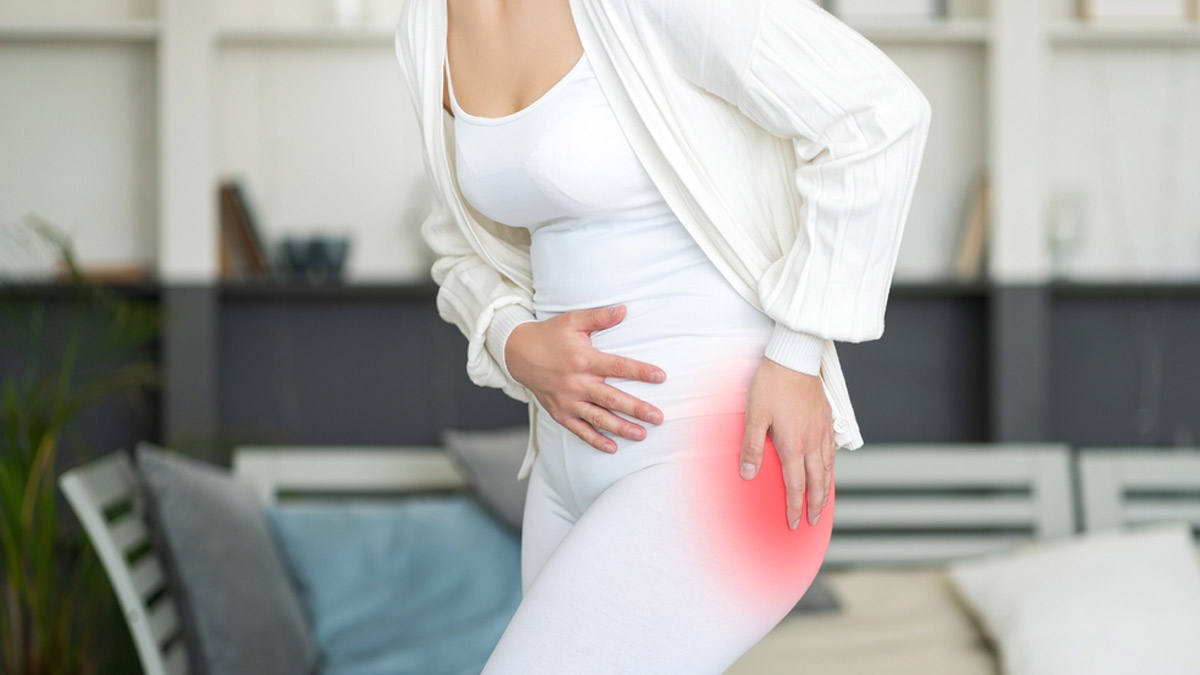
Osteoarthritis (OA) is a degenerative condition that impacts millions globally, resulting in discomfort, stiffness, and decreased mobility. Its impact on the hips can substantially hinder daily activities and overall quality of life. We spoke to Dr Rohit Lamba, Head of Department and Senior Consultant, Bone, Joint Replacement and Orthopaedics, SHALBY Sanar International Hospitals, Gurugram, who explained various aspects of OA of the hips, including its types, symptoms, diagnosis, and treatment options.
Table of Content:-

“The bones in a joint are covered by a layer made of tough and smooth cartilage. This cartilage works like a shock absorber and a lubricant. It helps the bones move over each other smoothly. Over some time, the cartilage starts to wear down, leading to friction in the joint and eventually causing OA. This condition most commonly affects the knees, hips, hands, neck and lower back”, highlighted Dr Lamba.
According to a 2018 study, hip OA prevalence is higher among men younger than age 50 years, whereas women have the highest prevalence after age 50 years.
Types of Osteoarthritis of the Hips
- Primary Osteoarthritis: It is the most common type of OA that develops in the joints over time. It is usually caused by normal wear and tear from movement as you age.
- Secondary Osteoarthritis: It occurs when there is direct damage to the joints multiple times. Injuries and traumas like falls, sports injuries or accidents could cause secondary OA. It can also be triggered by underlying medical conditions like obesity or rheumatoid arthritis.
Also Read: One Billion People Likely To Have Osteoarthritis By 2050, Study Reveals
Symptoms of Osteoarthritis of the Hips

The symptoms of hip OA can vary in severity from person to person, but commonly include:
- Pain in the hip joint, particularly during weight-bearing activities like walking or standing
- Stiffness and reduced range of motion in the hip joint, make it difficult to perform daily tasks like bending or squatting
- Swelling and tenderness around the hip joint
- Grinding or crunching sensations (crepitus) when moving the hip joint
- Walking or bearing weight on the affected hip is difficult
Various Risk Factors of Osteoarthritis
Here are the risk factors for the development of OA, as listed by the expert:
- Menopause
- Obesity
- Prior fractures or ligament injuries
- Hereditary and autoimmune diseases
- Paediatric disorders like Perthes’ Disease, Slipped Capital Femoral Epiphysis (SCFE), Developmental Dysplasia of the Hip (DDH), and Femoro-acetabular Impingement
Diagnosis of Osteoarthritis of the Hips
"After a thorough evaluation of your medical history and examination of the joint by an orthopaedician, imaging tests like X-rays, CT or an MRI scan may be advised to confirm the diagnosis and further evaluate the affected joint. A complete blood workup may be performed to rule out other conditions that cause similar symptoms", said Dr Lamba. There are stages of OA progression seen in an MRI scan. The stages start from pre-osteoarthritis leading to early, mild, moderate to severe OA.
Treatment of Osteoarthritis

Various joint-saving and cartilage restoration modalities are now available as treatment options. However, their effectiveness is limited to the initial stages of arthritis, particularly when cartilage damage is localised. In later stages, other options to manage the symptoms are adopted. Here are some measures as listed by the expert:
- Medicines: Non-steroidal anti-inflammatory drugs (NSAIDs) can alleviate pain and inflammation.
- Physiotherapy: A physiotherapist can guide you through exercises to strengthen the muscles around the joints, improving the flexibility of the joint and increasing its range of motion
- Supportive devices: Wearing shoe inserts or a brace can support and stabilise the hip joint. Using a cane or walker can take pressure off the affected joints and assist in safe movement
- Heat and Cold Therapies: Applying heat or cold packs to the affected joint might help relieve pain and stiffness. A physician will guide the frequency and duration of application of a heating pad, ice pack, or cool compress
- Surgery: Surgical intervention usually includes invasive procedures like a hip joint replacement or an arthroplasty to facilitate a better quality of life with reduced pain and enhanced mobility
Bottomline
Dr Lamba concluded, “OA affects the joints and gradually causes damage. It is commonly observed in hip joints, but it can also be seen in other joints. It is important to understand the symptoms and take proper precautionary measures. Consultation with an orthopaedician at the earliest is a must to rule out other diseases with the same symptoms and get treated for OA.”
[Disclaimer: This article contains information provided by an expert and is for informational purposes only. Hence, we advise you to consult your expert if you are dealing with any health issues to get the necessary treatment.]
Also watch this video
How we keep this article up to date:
We work with experts and keep a close eye on the latest in health and wellness. Whenever there is a new research or helpful information, we update our articles with accurate and useful advice.
Current Version